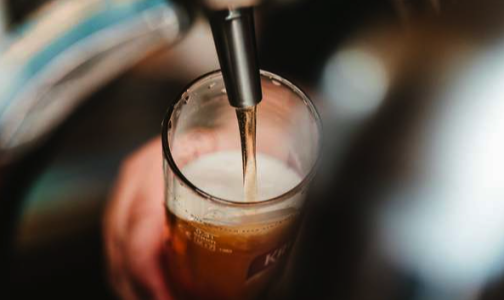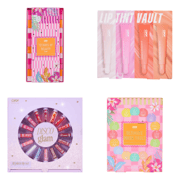Scientists reveal shocking link between non-alcoholic beers and deadly bacteria
- Replies 3
Non-alcoholic beer has exploded in popularity recently, especially among health-conscious drinkers looking to avoid the (extra) calories and impairment of regular brews.
But a disturbing new study suggests these buzz-free beverages could harbour risks of their own.
A recent study from Cornell University found that non-alcoholic beers can encourage the growth of bacteria like E. coli and salmonella.
In the study, they discovered that non-alcoholic beer had more bacterial growth compared to regular beer and low-alcohol beer (less than 2.5 per cent alcohol by volume). This may be due to the disinfecting properties of alcohol.

Researchers tested three different harmful bacteria in both non-alcoholic and low-alcohol beers over two months.
They also found that storing non-alcoholic beer in the fridge at temperatures below 4 degrees Celsius helped to keep it safer to drink than when it was kept at room temperature.
But don't worry; there's still a way to make non-alcoholic beverages safe! The researchers suggested that simply keeping these drinks cold is not enough.
The study's authors, who are food scientists from Cornell's AgriTech working with the Brewers Association, recommended that low and non-alcoholic beers should go through pasteurisation to make sure they are safe for commercial consumption.
They also suggested using sterile filtration and adding preservatives as extra precautions to reduce the risk of harmful microbes.
Food microbiologist Randy Worobo and his team conducted a study to understand how acidity (pH), storage temperature, and alcohol content (specifically ethanol) affect the growth or elimination of harmful microbes in beer.
They tested three different levels of beer acidity, similar to those found in wine and beer: 4.20, 4.60, and 4.80. They also adjusted the alcohol concentration, reducing the 3.65-percent ABV low-alcohol beer to 3.20-percent ABV.
They exposed mixtures of E. coli O157:H7, Salmonella enterica, and Listeria monocytogenes to these acidity and alcohol levels at two temperatures, 4 degrees Celsius and 14 degrees Celsius.
E. coli O157:H7 and salmonella survived in low and nonalcoholic beer for over two months (63 days), with the microbial colonies growing in nonalcoholic beer.
In all cases, Listeria monocytogenes bacteria died off during this time frame. It can cause listeriosis, a severe infection that affects about 1,600 people and causes approximately 206 deaths each year, according to the US Centers for Disease Control and Protection (CDC).
Overall, non-alcoholic beer provided a more favourable environment for pathogen growth, but bacteria survived in various conditions in both types of beer.
Regular beer, with alcohol content ranging from 4 to 5 per cent ABV for a light beer and up to 10 per cent ABV for craft beers, is resistant to bacterial growth, making it suitable for storage at room temperature in grocery stores.
The researchers recommended that low and non-alcoholic beers, particularly those with a pH higher than 4.20, should be reviewed by brewery experts with knowledge of the beer's thermal processing requirements to ensure safety.

Members, have you ever had any issues after drinking non-alcoholic beer? Share your thoughts in the comments below!
But a disturbing new study suggests these buzz-free beverages could harbour risks of their own.
A recent study from Cornell University found that non-alcoholic beers can encourage the growth of bacteria like E. coli and salmonella.
In the study, they discovered that non-alcoholic beer had more bacterial growth compared to regular beer and low-alcohol beer (less than 2.5 per cent alcohol by volume). This may be due to the disinfecting properties of alcohol.

Non-alcoholic beers provide a fertile breeding ground for bacteria like E. coli and salmonella, according to a new study. Credit: Unsplash.
Researchers tested three different harmful bacteria in both non-alcoholic and low-alcohol beers over two months.
They also found that storing non-alcoholic beer in the fridge at temperatures below 4 degrees Celsius helped to keep it safer to drink than when it was kept at room temperature.
But don't worry; there's still a way to make non-alcoholic beverages safe! The researchers suggested that simply keeping these drinks cold is not enough.
The study's authors, who are food scientists from Cornell's AgriTech working with the Brewers Association, recommended that low and non-alcoholic beers should go through pasteurisation to make sure they are safe for commercial consumption.
They also suggested using sterile filtration and adding preservatives as extra precautions to reduce the risk of harmful microbes.
Food microbiologist Randy Worobo and his team conducted a study to understand how acidity (pH), storage temperature, and alcohol content (specifically ethanol) affect the growth or elimination of harmful microbes in beer.
They tested three different levels of beer acidity, similar to those found in wine and beer: 4.20, 4.60, and 4.80. They also adjusted the alcohol concentration, reducing the 3.65-percent ABV low-alcohol beer to 3.20-percent ABV.
They exposed mixtures of E. coli O157:H7, Salmonella enterica, and Listeria monocytogenes to these acidity and alcohol levels at two temperatures, 4 degrees Celsius and 14 degrees Celsius.
E. coli O157:H7 and salmonella survived in low and nonalcoholic beer for over two months (63 days), with the microbial colonies growing in nonalcoholic beer.
In all cases, Listeria monocytogenes bacteria died off during this time frame. It can cause listeriosis, a severe infection that affects about 1,600 people and causes approximately 206 deaths each year, according to the US Centers for Disease Control and Protection (CDC).
Overall, non-alcoholic beer provided a more favourable environment for pathogen growth, but bacteria survived in various conditions in both types of beer.
Regular beer, with alcohol content ranging from 4 to 5 per cent ABV for a light beer and up to 10 per cent ABV for craft beers, is resistant to bacterial growth, making it suitable for storage at room temperature in grocery stores.
The researchers recommended that low and non-alcoholic beers, particularly those with a pH higher than 4.20, should be reviewed by brewery experts with knowledge of the beer's thermal processing requirements to ensure safety.
Key Takeaways
- Non-alcoholic beers may provide a fertile breeding ground for dangerous bacteria such as E. coli and salmonella, according to a study from Cornell University.
- Researchers noted that refrigerated non-alcoholic beer was safer to drink than the same lager at room temperature, but this alone was not sufficient to ensure safety.
- The study authors suggested that non-alcoholic and low-alcohol beers undergo pasteurisation and additional measures, such as sterile filtration and added preservatives.
- Traditional alcoholic beers, with an ABV range of about 4 to 10 per cent, are immune to bacterial formation due to their alcoholic content, enabling storage at room temperature.
Members, have you ever had any issues after drinking non-alcoholic beer? Share your thoughts in the comments below!







